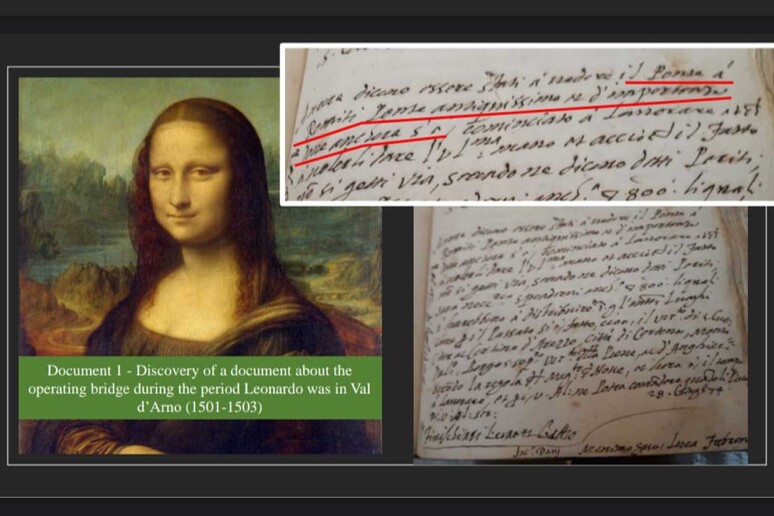An Italian expert said Wednesday that
a mystery regarding the Mona Lisa has been solved, as the bridge
that Leonardo da Vinci depicted in the background has been
identified as the Romito bridge in Laterina, in the province of
Arezzo.
Research coordinated by the historian Silvano Vinceti, who in
the past has made several important discoveries about the most
famous portrait in the world, seems to leave little doubt about
a mystery that has been at the centre of countless disputes over
the years.
Among the previous theses that caused the commotion were those
saying it was the medieval bridge in Bobbio, in the province of
Piacenza, and a bridge in Buriano in the province of Arezzo.
But this latest research - conducted thanks to the collaboration
of the La Rocca cultural association and based on new historical
documents and comparisons between current photographs and the
painting - has made it possible to identify the real Mona Lisa
bridge.
"It is the Romito Etruscan-Roman bridge, also known as Ponte di
Valle, located in the municipality of Laterina in the province
of Arezzo," explained Vinceti.
"Only one arch remains of the bridge today, but in the period
between 1501 and 1503 the bridge was functioning and it was very
busy, as shown by a document on the state of assets on Medici
family properties, found in the State archives of Florence".
It was precisely at that time that Leonardo was in the Val
d'Arno area, first at the service of Cesare Borgia, known as the
Valentino, and then for the gonfalonier of the Republic of
Florence, Pier Soderini.
The Romito bridge had four arches, resting on two cliffs, was
part of a byway, or shortcut, that made it possible to shorten
the journey between Arezzo, Fiesole and Florence by several
kilometres.
The Bobbio bridge, on the other hand, has more than six arches,
and the one in Buriano has six.
Furthermore, these structures are situated on flat ground.
"There are several matches with the Romito bridge," stressed
Vinceti.
"The distinctive form of the Arno along that stretch of
territory corresponds to what Leonardo portrayed in the
landscape to the left of the noblewoman depicted in the famous
painting.
"These matches emerged thanks to images taken from a drone which
allowed us to highlight the presence of two cliffs on the left
and right side of the Romito bridge and the sinuous course of
the Arno, as depicted in the painting of the Mona Lisa".
The virtual reconstruction of the bridge, created on the basis
of the width of the Arno in the section where the Romito bridge
is located, highlights a strong similarity with the bridge in
the portrait.
The same can be said for the shape and size of the four arches.
"Significantly, there are also historical documents which
certify that Leonardo often resided in Fiesole at that time,
with an uncle who was a priest, named Amadori or Amadoro," added
Vinceti, who is also President of The National Committee for the
Enhancement of Historical, Cultural and Environmental Heritage.
"The analysis of the images taken with the drone and of
historical documents have also enabled us to identify, with a
high level of probability, the landscape painted in the lower
left part of the Mona Lisa.
"That is to say the formation of bluffs, or earth pyramids, in
the upper Val d'Arno area that inspired Leonardo.
"And in this regard, some drawings of bluffs present in the
Hammer Code (or Leicester Code), Leonardo's famous manuscript
dating from between 1506 and 1510, are of fundamental
importance."
ALL RIGHTS RESERVED © Copyright ANSA











